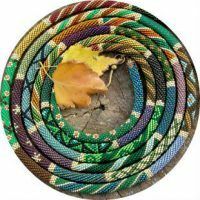
Very original and original look jewelry, made in the form of a bundle or cord of beads. Professionals use their secrets for obtaining such ornaments, follow complex specialized schemes, operate several colors of beads at once, collecting them in a huge number of rows, and as a result they receive products of surprising beauty.
- What are the beads of the bead
- The technique of the three-color beadwork
- The harness from the two colors
Beginners who want to learn the weaving technique should start with simpler options.
Therefore, in today's master class you will learn the two most common and easy techniques of weaving a spiral bundle using two and three shades of beads.
First of all, decide how thick you want to burn. It is worth noting that the easiest way for beginners is to give a tourniquet of medium thickness, one ring of which consists of six to ten beads. It is also worth noting that it is initially easier to work with a large beaded matt color and the same shape.
What are the plaits from the bead
Not many people know that the tourniquet from the beads is a hollow cord, which it is customary to perform with a crochet hook or without it with a dense or openwork weave.
Let's see what kind of harnesses there are.
Turkish. Similar harnesses are made with the help of a crochet hook.
Weaving is carried out according to a certain pattern, using beads with a glass bead. The result is quite an original decoration.
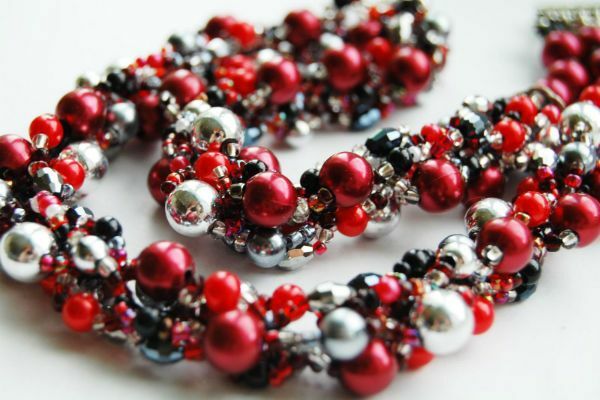
African harnesses. Twisted bundles consisting of a different number of beaded spirals. It is considered one of the oldest ways of beadwork.
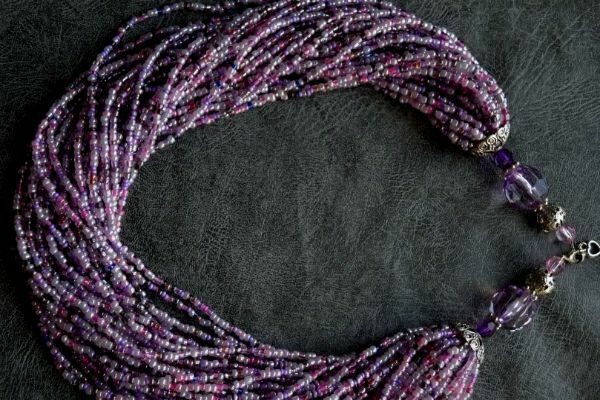
American. This beautiful and easy-to-carry cords, which earned their popularity among American masters.
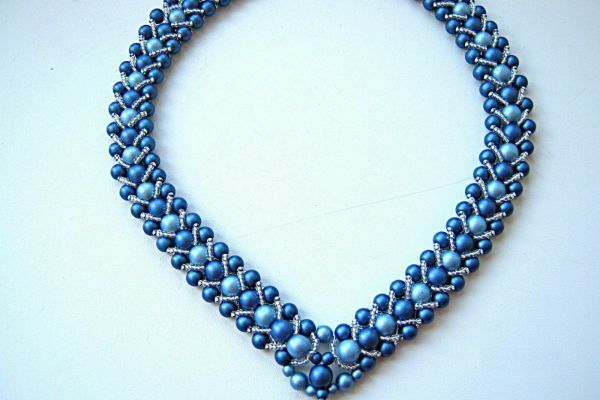
Flat. This is a flat ribbon of beads in combination with other decorative materials.
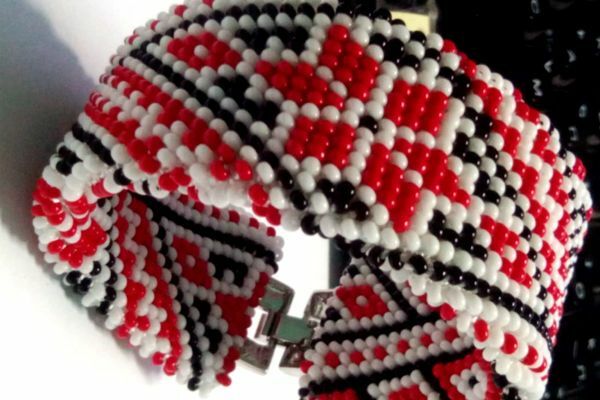
Mosaic. Such bundles are the most common, and the scheme of their execution is quite simple even for beginners.
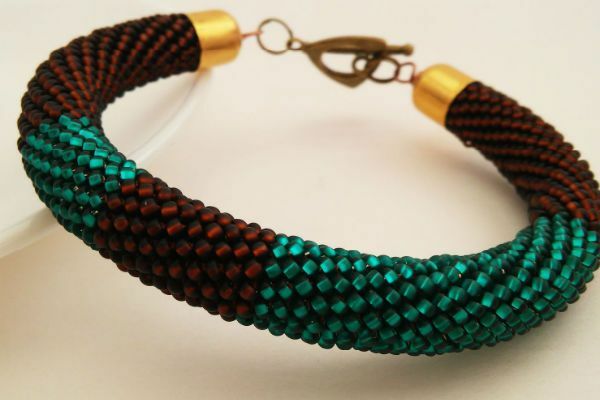
Twisted or spiral. It is believed that this is the most beautiful weaving, especially if it is made in contrasting colors. Of the twisted strands of beads, usually weave bulk necklaces, often combining them with openwork weaving for originality.
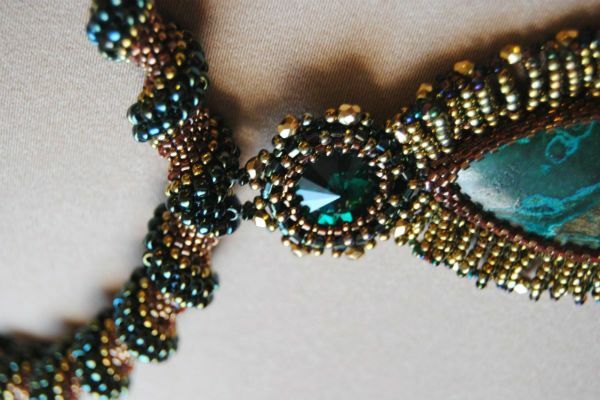
Square or tetrahedral plaits. This is a fairly complex kind of weaving, so it's only for professionals. But the tetrahedral shape of the product looks quite original and is perfect for decorating a complex design, with inserts made from natural stones.
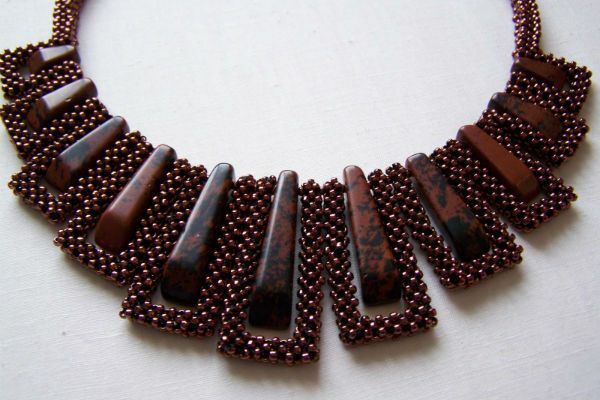
Openwork. Such bundles are woven with gaps, due to which the product becomes more flexible and looks light and weightless.
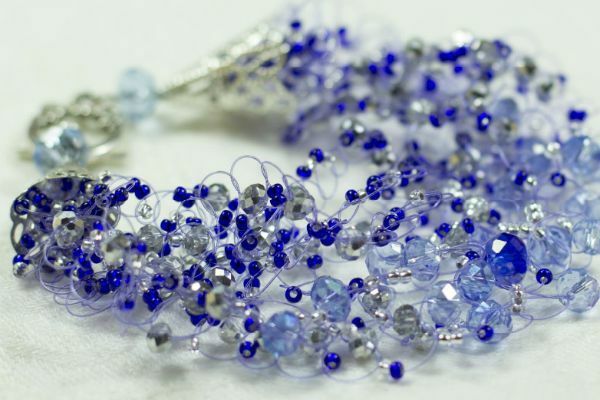
Shaggy. Already from the name it can be concluded that such bundles look complicated, bulky, fluffy. But this only adds to their attractiveness.
They look great when combining beads of different shapes and sizes with other accessories - beads, leaves, flowers.
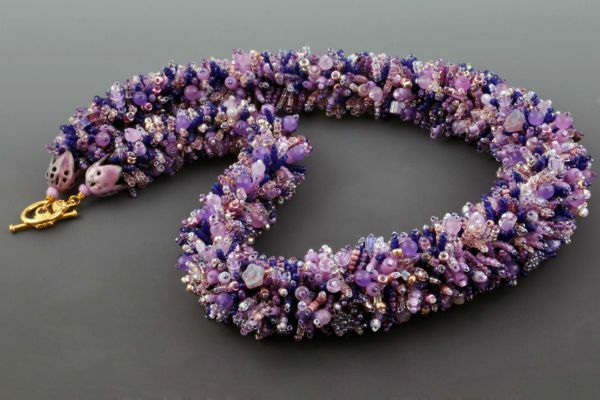
Technique of tri-color beadwork
For the harness you will need beads of three shades, but the same shape, thin needle, silk thread.
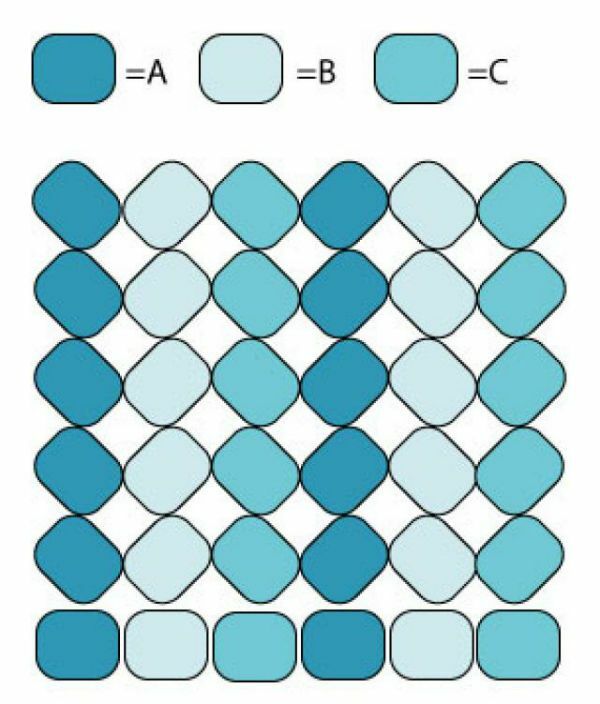
Look at the picture. We will understand by the value of A - one color of the beads, B - another, under C - the third.
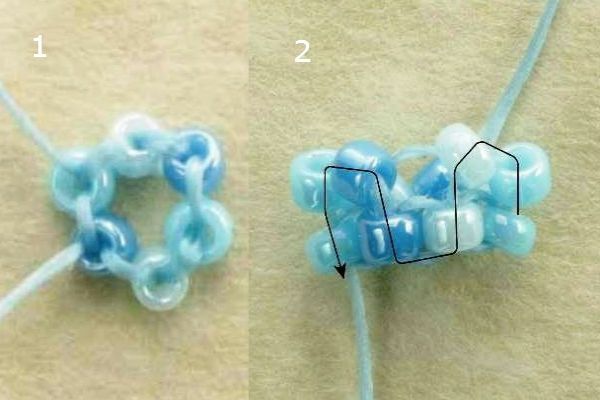
First row. String six beads on the needle in this order: 1A - 1B - 1C - 1A - 1B - 1C.
Pull the needle through the first bead( 1A) and then up to the last bead( 1C)and form a ring. Thread the thread as tight as possible. At each stage, follow the implementation of this action - this is very important. Otherwise, the rings of your rope will not hold the shape.
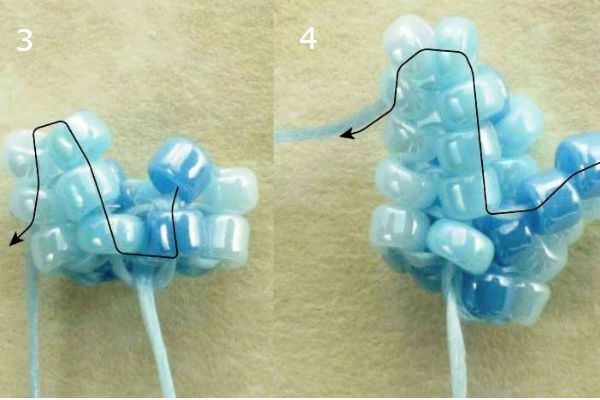
Second row. Type six beads in the same order and tighten them to the first row. Insert the needle into the first bead of the first row and drag through all the others.
To get a linear pattern, you need to pass the needle through the beads of the same color. For a spiral pattern through a bead that is near.
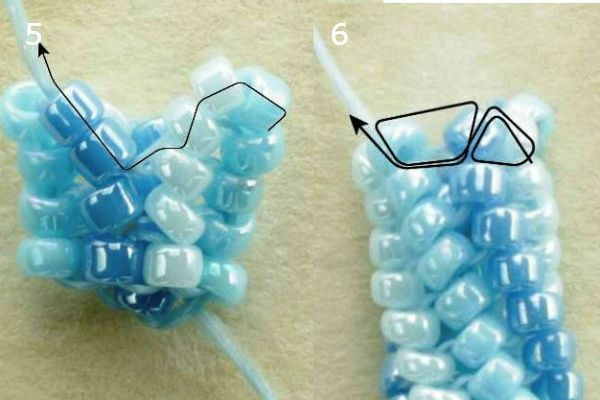
Third row. Again, type six beads in the same sequence and pass the needle through the second bead in the previous row, passing through all the other beads.
In the fourth row - we pass through the third bead, in the fifth - through the fourth, in the sixth - through the fifth, in the seventh - through the sixth.
The next step is to repeat the same procedure.
to contents ^Harness from two colors
Type five light beads on the thread, and four dark beads. Stretch the needle in the opposite direction through the light beads, except the very first. You should get a ring, in which on both sides there will be beads of different colors.
All subsequent rows of the harness are created in the same way. One bead of light color and four dark ones are dialed. The needle is passed in the opposite direction through the next four light beads.
In the end, you should add a clasp to the harness and you have a wonderful bracelet ready.
